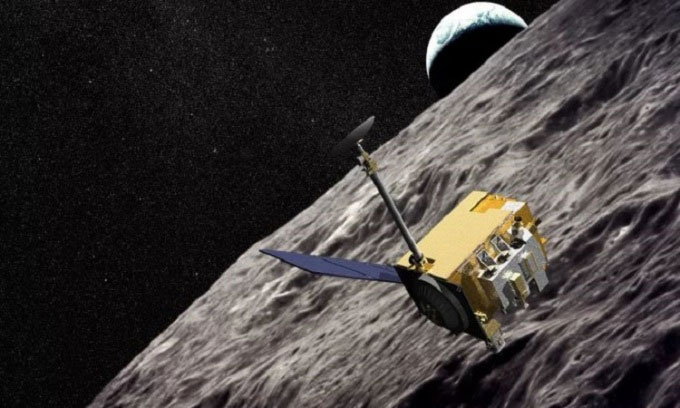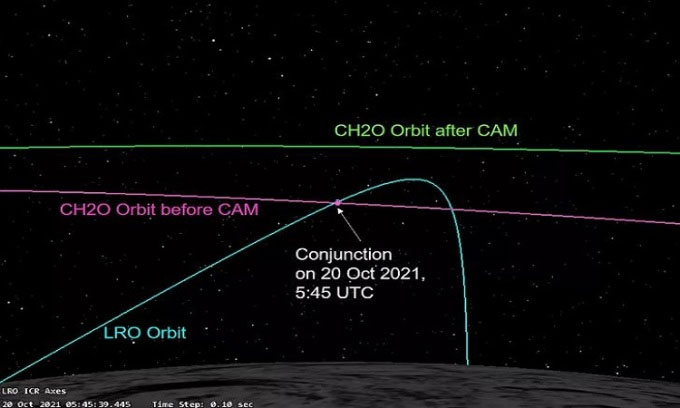The Indian spacecraft Chandrayaan-2 orbiting the Moon had to adjust its trajectory to avoid coming too close to NASA’s Lunar Reconnaissance Orbiter.

Simulation of the Lunar Reconnaissance Orbiter orbiting the Moon. (Photo: NASA)
In mid-October, data from the Indian Space Research Organisation (ISRO) and NASA indicated that the two spacecraft would fly extremely close to each other in the northern polar region of the Moon on October 20.
“In the week leading up to the encounter, analyses from both ISRO and NASA indicated that the orbital radii of the two spacecraft were less than 100 meters apart. The estimated closest distance between Chandrayaan-2 and the Lunar Reconnaissance Orbiter was only about 3 kilometers,” according to an ISRO announcement.
The two space agencies agreed that the Indian spacecraft would perform a collision avoidance maneuver on October 18 by adjusting its orbit. Both spacecraft are orbiting the Moon near the polar region, which means the duo certainly faced the risk of flying close to each other.

The trajectory of Chandrayaan-2 (CH2O) before and after the orbital adjustment maneuver to avoid collision (CAM). (Photo: ISRO)
“NASA and ISRO coordinated the collision avoidance maneuver performed by the Chandrayaan-2 spacecraft on October 18,” shared Nancy Jones, a spokesperson for NASA at the Goddard Space Flight Center. “Such collaborations between space agencies help ensure safe operations for satellites orbiting the Moon. Both the Lunar Reconnaissance Orbiter and Chandrayaan-2 were not in danger.”
Trajectory adjustments are quite common in Earth orbit, where thousands of satellites are operational. Space traffic management requires more careful planning due to the signal delay between control centers on Earth and distant locations like the Moon or Mars.

















































